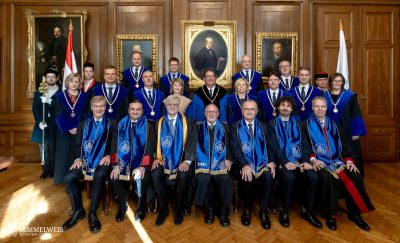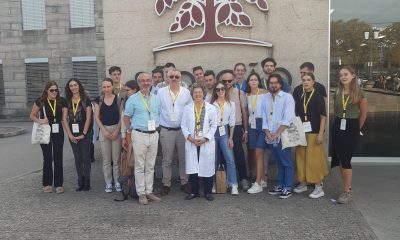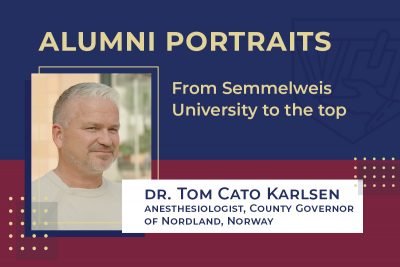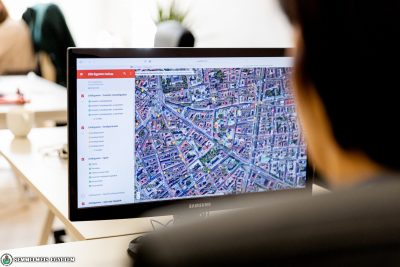 “Our goal is to make the university greener. If the exact locations of the selective waste collection, battery collection, fluorescent tube collection, residential needle collection or bicycle storage facilities that we work together on are visible on a map, anyone can easily search for them, helping and promoting their use,” said Mátyás Simon, head of the Directorate of Security Service. The newly created interactive map was his initiative, he said, primarily to get the word out to as many people as possible about these initiatives. He said that the map works by zooming in on the university’s sites to display pictograms of the services available there, and clicking on the pictogram to display a photo makes it easier to identify the specific location, which greatly helps people to find their way around.
“Our goal is to make the university greener. If the exact locations of the selective waste collection, battery collection, fluorescent tube collection, residential needle collection or bicycle storage facilities that we work together on are visible on a map, anyone can easily search for them, helping and promoting their use,” said Mátyás Simon, head of the Directorate of Security Service. The newly created interactive map was his initiative, he said, primarily to get the word out to as many people as possible about these initiatives. He said that the map works by zooming in on the university’s sites to display pictograms of the services available there, and clicking on the pictogram to display a photo makes it easier to identify the specific location, which greatly helps people to find their way around.
The basis is a Google map, on which environmental expert Zoltán Horti has added the information. The new development is interactive, as is the whole website: a suggestion box invites ideas from university citizens on services to be displayed, green initiatives or existing projects. The ideas received will be managed by the directorate and, if necessary, other departments will be involved in the implementation of the ideas.
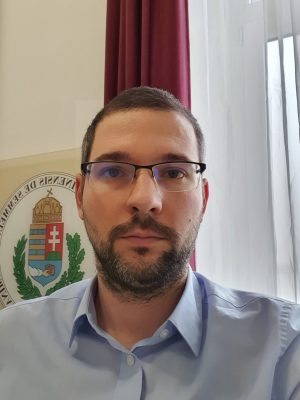 Several projects have already been launched at the various sites and departments of Semmelweis University, and several are in the preparatory stage, the head of the directorate stressed. For example, they have prepared a short film on the importance of selective waste collection and alternative modes of transport, promoted a waste-free lifestyle through a project week, and is negotiating with scooter rental companies to offer discounts to Semmelweis citizens for using this alternative form of transport. “In addition, partners are being sought to develop used cooking oil collection in the dormitories,” he said, listing some of the elements of their program. He stressed that their aim is to encourage university students and staff to adopt an environmentally conscious lifestyle.
Several projects have already been launched at the various sites and departments of Semmelweis University, and several are in the preparatory stage, the head of the directorate stressed. For example, they have prepared a short film on the importance of selective waste collection and alternative modes of transport, promoted a waste-free lifestyle through a project week, and is negotiating with scooter rental companies to offer discounts to Semmelweis citizens for using this alternative form of transport. “In addition, partners are being sought to develop used cooking oil collection in the dormitories,” he said, listing some of the elements of their program. He stressed that their aim is to encourage university students and staff to adopt an environmentally conscious lifestyle.
Mátyás Simon considers it an important step forward that Semmelweis University joined the Green Metric Ranking of World Universities last year, which ranks higher education institutions worldwide from a sustainability perspective. Currently, the university is ranked 467th, putting it in the midfield of the ranking that includes about 1,000 institutions, and the university would like to improve this position in the near future.
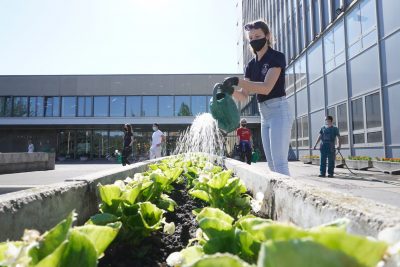 A similar goal has been set by the Students’ Union (HÖK), which took the lead in the Green University project in 2021. In this context, Bálint Tripolszky, president of the Students’ Union, said that responses to the global climate crisis must be integrated into the everyday life of students, a need that was clearly confirmed by student feedback. He said that they are working together with the directorate on green issues: the HÖK is active primarily in mobilizing students, organizing projects and programs for them, while the directorate is taking up complex, cross-departmental issues. Tripolszky said that it is important that the university’s green program has been accepted by the Senate and is supported by the university’s management, thus ensuring the possibility of continuous expansion and development.
A similar goal has been set by the Students’ Union (HÖK), which took the lead in the Green University project in 2021. In this context, Bálint Tripolszky, president of the Students’ Union, said that responses to the global climate crisis must be integrated into the everyday life of students, a need that was clearly confirmed by student feedback. He said that they are working together with the directorate on green issues: the HÖK is active primarily in mobilizing students, organizing projects and programs for them, while the directorate is taking up complex, cross-departmental issues. Tripolszky said that it is important that the university’s green program has been accepted by the Senate and is supported by the university’s management, thus ensuring the possibility of continuous expansion and development.
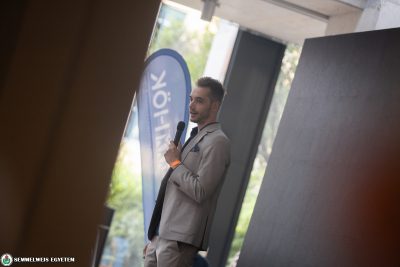 Speaking about the specific program points, the HÖK president highlighted the new elective course entitled “Green University – together with our environment”, which was first announced in the January admission period and proved to be a huge success: the 100-person limit was eventually expanded to 500 students, which is also a clear indication of the students’ interest in the topic. In a month’s time, fully online, paperless student administration will be gradually introduced, and work is also underway to introduce the system of reusable cups – which has been in place since last year for the university’s student council programs – in the university buildings as well. Among the new developments, the interactive map is another major step forward, making the environmental project, which students also consider important, more easily accessible.
Speaking about the specific program points, the HÖK president highlighted the new elective course entitled “Green University – together with our environment”, which was first announced in the January admission period and proved to be a huge success: the 100-person limit was eventually expanded to 500 students, which is also a clear indication of the students’ interest in the topic. In a month’s time, fully online, paperless student administration will be gradually introduced, and work is also underway to introduce the system of reusable cups – which has been in place since last year for the university’s student council programs – in the university buildings as well. Among the new developments, the interactive map is another major step forward, making the environmental project, which students also consider important, more easily accessible.
The Semmelweis University Green University website can be accessed by clicking on this link.
The new map function of the website is available by clicking on this link.
The Semmelweis Green University student Facebook page can be found here.
Péter Pogrányi
Translation: Tamás Deme
Photo: Attila Kovács – Semmelweis University, Mátyás Simon, Midián Ruha (illustration)
